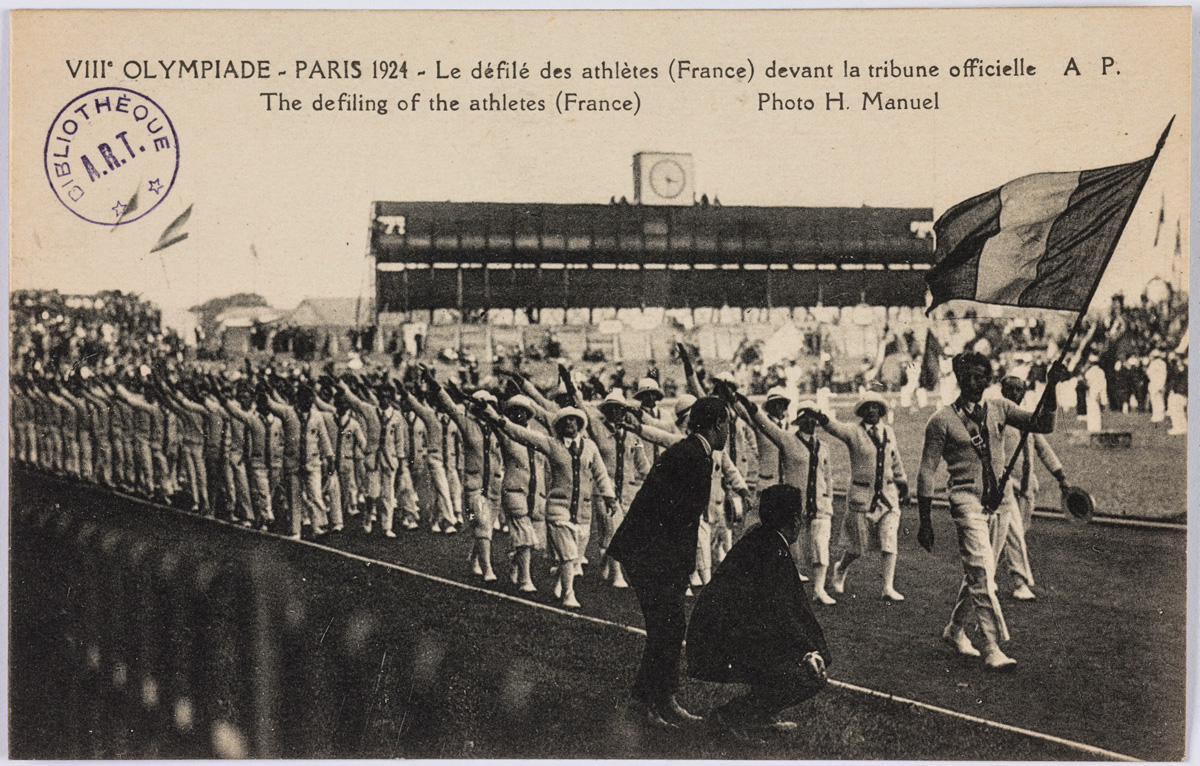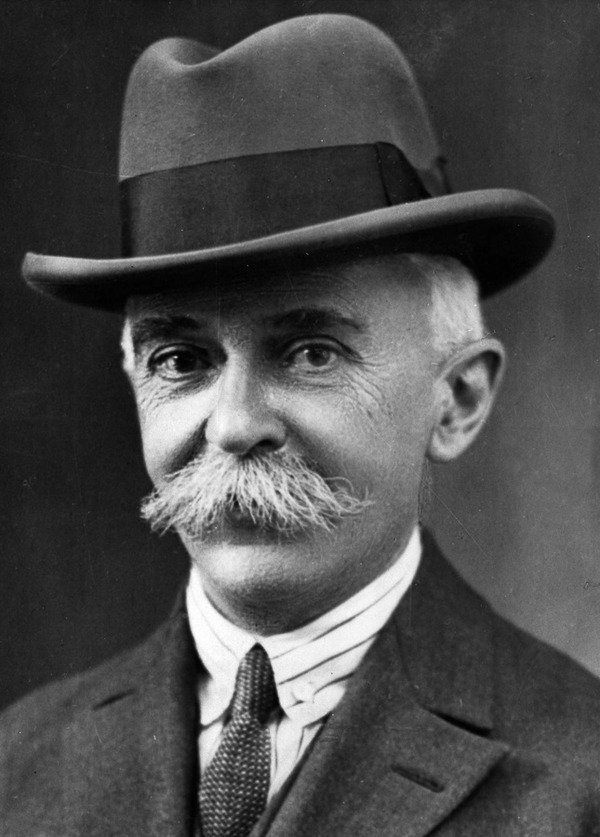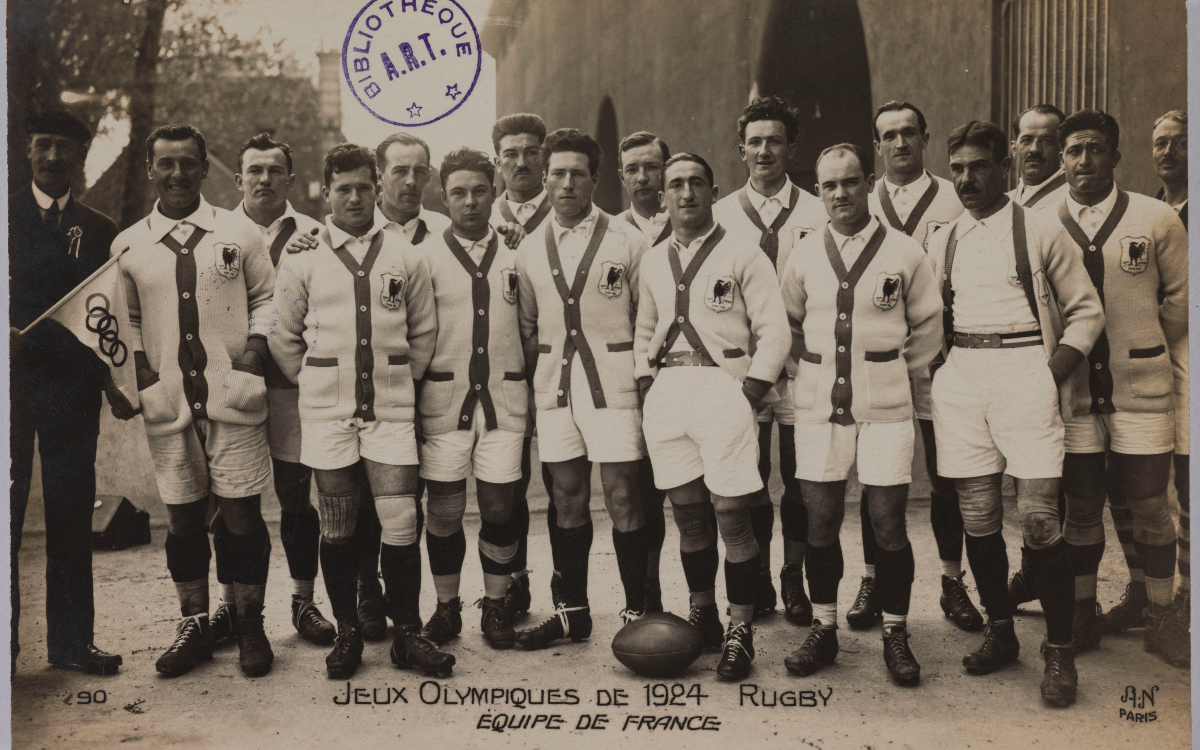Cette page est aussi disponible en français
1900, 1924, 2024… Paris has been host city for the Olympic Games three times. The romance between the Games and the City of Light has been unbroken, guided by the vision of Pierre de Coubertin, the founder of modern Olympism. One hundred years after the last Olympic Games were held in Paris on July 5, 1924, we take a look back at the shared history between the capital and Olympism.
The Olympic dream was born in Paris. Having hosted the Games in 1900 and 1924, Paris has always followed the Olympic ideal of Pierre de Coubertin, the founder of the modern Games, who thought that sport could play an important societal role.
Still reeling from the Dreyfus Affair by 1900, the French government hijacked Pierre de Coubertin's Olympic project to glorify democracy and the republican regime. Deemed too worldly and too English, athletic sports were confined to the posh clubs of western Paris. At the Vincennes Stadium-Velodrome, gymnasts and champion cyclists celebrated triumphs, their popularity significantly boosted by Parisian bicycle brands.
German, British, French, Hungarian and even Australian swimmers competed in the open water between Courbevoie and the Pont d'Asnières. The Olympic Games were also an opportunity for France to promote its inventions through unprecedented aerostat and automobile competitions.

VIII Olympiad - Paris 1924. Parade of athletes (France) in front of the official stand
Crédit photo :
© Roger-Viollet
French sporting traditions were not forgotten, with events such as jeu de paume, angling, boules lyonnaises and pigeon racing, nor were lifesaving disciplines deemed utilitarian. For the 1924 Games, Paris hosted 6,000 athletes from 45 countries.
In 1921, after much hesitation, the International Olympic Committee (IOC) decided to award the eighth Summer Olympic Games to the city of Paris. Competition from other candidate cities such as Amsterdam, Barcelona, Los Angeles, Lyon, Prague and Rome was fierce and the choice was difficult. But it actually had more to do with the poor relations between the members of the French Olympic Committee (COF) and Pierre de Coubertin. The former did not accept the latter's authoritarianism and susceptibilities, nor the IOC's supervision of international sports federations that many of them headed.
Diplomatic intervention from the Quai d'Orsay helped to ease these difficult relations, and everything was done to make the Paris Games a sporting success and a demonstration of French power.

Pierre de Coubertin
Crédit photo :
© Albert Harlingue / Roger-Viollet
On June 23rd, 1924, a tribute was paid to Pierre de Coubertin for having had "the principle of re-establishing the Olympic Games in a modern form" at the Sorbonne in 1894, and for having presented his Olympic flag there in 1914.
600,000 spectators in 1924
It is difficult to estimate the number of foreign visitors among the 600,000 spectators who bought a ticket. 20,000 posters, 250,000 programs (95,000 in English and 55,000 in Spanish), 1.6 million luggage tags, 25 million cigarette-box stickers and 153 million special postage stamps were printed. Over 3,000 screenings were held in Paris theaters.
The sports and leisure business then experienced a boom: men's and women's clothing, accessories and equipment, as well as specialized press. The Games were a godsend for Paris merchants, who did not wait to register their products as Olympic brands. Bars, dance halls and fairground stalls sprang up around the Colombes stadium. Camelots sold banners, cushions and even "Olympic snacks".

Colombes stadium
Crédit photo :
© CAP / Roger-Viollet
French sports leaders called for a large 100,000-seat stadium. But in the midst of the housing crisis, the City of Paris and the parliament were unable to agree on the financing of such a project. It was Racing Club de France who broke the deadlock, reaching an agreement in 1922 with the Comité National des Sports (CNS).
The elite club decided to transform its athletics track into a highly original 60,000-seat stadium. The Colombes stadium, designed by architect Louis Faure-Dujarric, was quite luxurious for its time: hot water, electric lighting, space heating, changing rooms for up to 1,200 athletes, a training track under the grandstand and press rooms under the other stands.
The Tourelles swimming pool was built for the 1924 Games
In 1924, Parisians who knew how to swim were probably few and far between. For a long time, the Seine and its tributaries were frequented only by bargemen and fishermen. The first river baths were set up in barges and date back to the 1760s. They were later superseded by floating baths built on stilts, like the luxurious Deligny establishment (1801).
It wasn't until the 1920s that indoor swimming pools with running water became the norm. From then on, competitive swimming competed with bathing, even though the French federation only had 6,430 members.
The Tourelles nautical stadium, built at the Porte des Lilas, was the other major facility built for the 1924 Games. It was the first 50-meter pool in Olympic history. Featuring an impressive diving board and seating for 7,000, it was designed for a great spectacle.
The Tourelles nautical stadium, built at the Porte des Lilas, was the other major facility built for the 1924 Games. It was the first 50-meter pool in Olympic history. Featuring an impressive diving board and seating for 7,000, it was designed for a great spectacle.
The Georges Vallerey swimming pool, the Cipale velodrome, the Trinquet, the Auteuil lawns and the Colombes stadium, all hosted events. They all witnessed this era: discover them as you stroll through this map.
Games in Paris and Greater Paris
In 1924, the Olympic rowing events were held in Argenteuil, and the yachting events in Meulan. Equestrian events were held at the Colombes stadium, the Bagatelle Polo Club, the Auteuil racecourse, the Saint-Cloud park and the Bois de Boulogne and Bois de Meudon. The Versailles and Issy-les-Moulineaux shooting ranges were used for hunting and pigeon shooting. Some Olympic events were held far beyond this "Grand Paris du sport": sailing was in Le Havre, target shooting was in Reims or at the military stand in Châlons-sur-Marne.
We want to hear from you!
Was this information useful to you?
Please note: we cannot reply via this form (please do not include any personal information).


